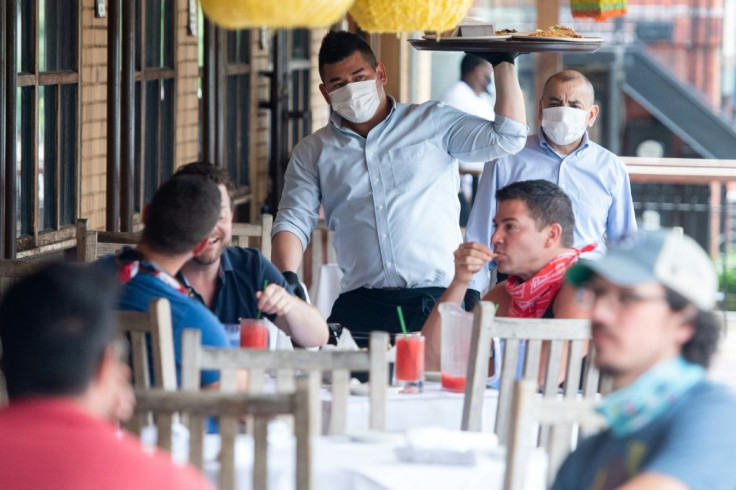US Fed At Last Launches Main Street Lending Program
The US Federal Reserve at long last launched its Main Street Lending Program on Monday after making a series of changes to broaden its reach.
The central bank also announced it will roll out the first segment of another emergency lifeline starting Tuesday, under which the Fed will buy up to $750 billion in corporate bonds.
The Fed several times in recent weeks was on the verge of rolling out the Main Street program, but held off as it expanded the criteria to reach more companies struggling to deal with the damage done by coronavirus shutdowns.
"Lenders ... are encouraged to begin making Main Street program loans immediately," the Fed's Boston regional bank, which administers the program, said in the announcement.
The program aims to support businesses that are too big to benefit from the Paycheck Protection Program run by the Treasury Department, and help them to retain their employees.
The US Chamber of Commerce called it "a lifeline for businesses that have been disrupted by the health and economic consequences of COVID-19."
After hearing from thousands of firms and banks, the Fed slashed the minimum loan amount to $250,000 from $1 million originally.
The changes also extend the life of the loans to five years, and offer a two-year grace period on principal repayment, while interest payments are deferred for one year.
The Fed also opened the aperture of the facility at the top end, expanding the maximum loan size to as much as $300 million
The Main Street program is available to businesses with up to 15,000 employees, or as much as $5 billion in annual revenue, that were solvent before the crisis.
Unlike the Treasury Department's PPP loans, which turn into grants as long as most of the funds are used to pay workers, the Main Street loans are not forgivable.

US Treasury Secretary Steven Mnuchin said the program "is designed to help ensure that small and medium-sized businesses have access to the credit they need to get through this challenging period."
The firms benefitting from the $600 billion in available funding are subject to the restrictions Congress required under the $2.2 trillion CARES Act: they cannot pay dividends to investors or buy their own shares until one year after the conclusion of the loan, and there are restrictions on executive pay.
Once the lenders extend credit to businesses, the Fed will purchase 95 percent of the loans to ensure banks continue to have cash available to put into the economy.
Since the pandemic hit in mid-March, the Fed has rushed out a series of emergency programs to pump liquidity into the US economy amid the severe downturn caused by the effort to contain the spread of COVID-19, including buying unlimited amounts of US Treasury debt, in an alphabet soup of new measures.
Among the latest, the New York Federal Reserve Bank announced it will begin buying qualified corporate debt starting Tuesday in a program that runs through September 30.
The Secondary Market Corporate Credit Facility (SMCCF) will buy bonds issued by US companies that have not benefitted from other government aid, including the CARES act.
The goal is to "support market liquidity for corporate debt," the New York Fed said.
The second half of the program, the Primary Market Corporate Credit Facility (PMCCF), will help companies more directly and is due to launch "in the near future."
"The PMCCF will provide a funding backstop for corporate debt to Eligible Issuers so that they are better able to maintain business operations and capacity during the period of dislocation related to COVID-19," the New York Fed said.
© Copyright AFP 2024. All rights reserved.





















